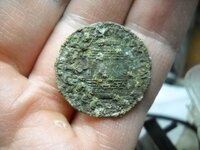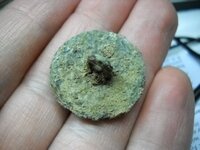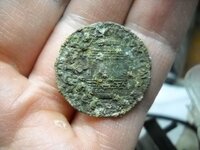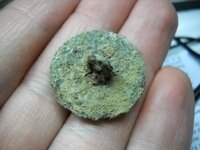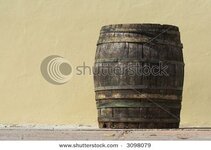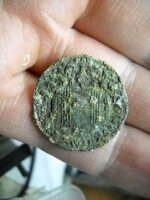Hi everyone, I just posted this button in the Cleaning forum looking for tips on how to proceed, but I was hoping someone in this forum might recognize it as it is.
Last Sunday, I was digging with a buddy in the foundation of a long-gone building from the 18th century. Oyster shells, glass, pewter utensils, shoe buckles, and pipe bowls were all suggesting 1700s. My friend dug a 1699 jeton there last week. This pewter button was a few inches from a brass shoe buckle about 3 feet down. It looks like a barrel and has some writing but I can only make out a few letters here and there. Has anyone seen a button like this before?
Thanks for any help!
-Jason
Last Sunday, I was digging with a buddy in the foundation of a long-gone building from the 18th century. Oyster shells, glass, pewter utensils, shoe buckles, and pipe bowls were all suggesting 1700s. My friend dug a 1699 jeton there last week. This pewter button was a few inches from a brass shoe buckle about 3 feet down. It looks like a barrel and has some writing but I can only make out a few letters here and there. Has anyone seen a button like this before?
Thanks for any help!
-Jason


